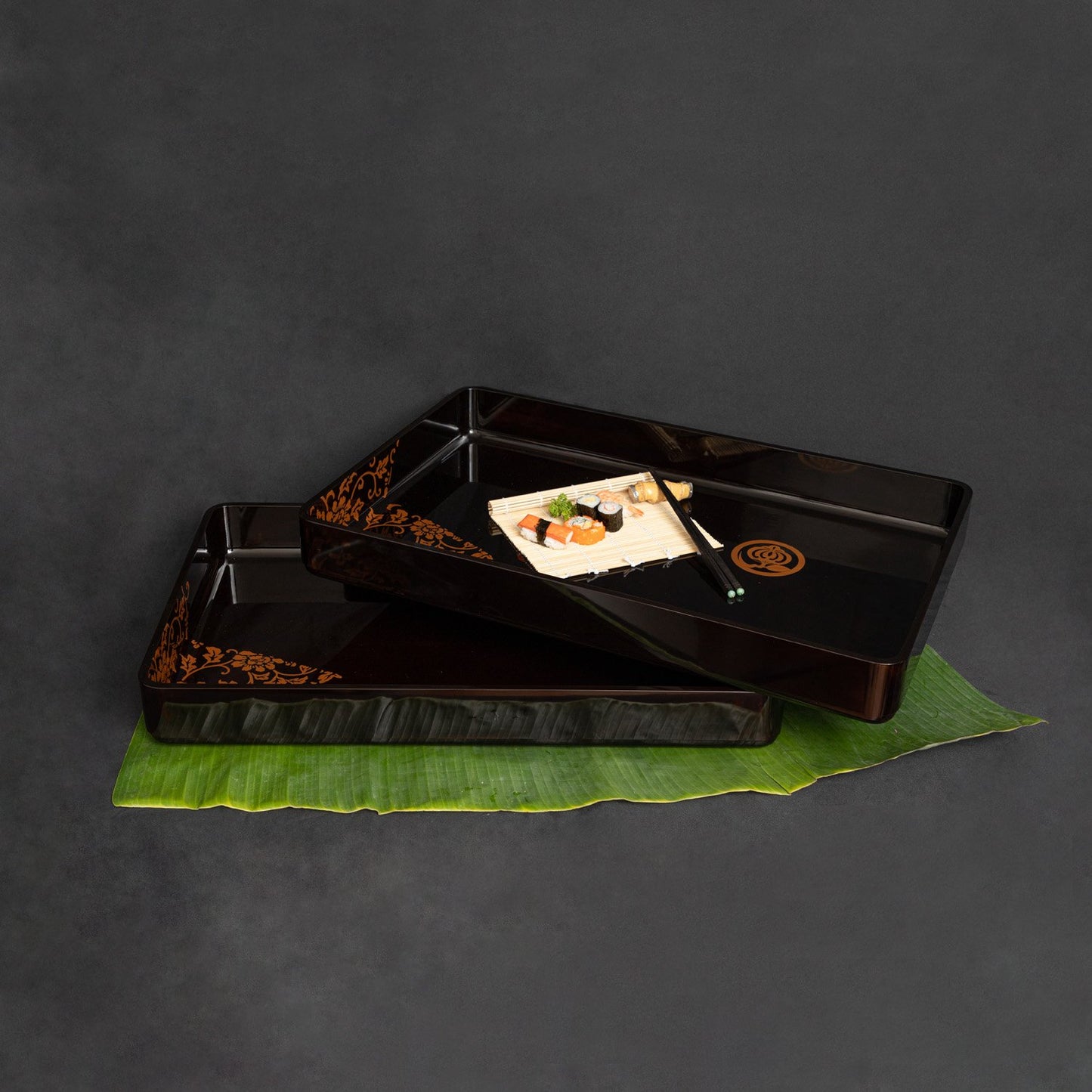



| Japanese Lacquer Tray with Samurai Crest Motif from the Meiji Period 1868 – 1912, made in Circa 1890. It has been signed by maker Ishida Magozaburo of Wajima Kyodai company. Trays like these were used to bear gifts for the nobles and the royal courts and were used in a wealthy aristocratic households of Japan. Further, Trays with lacquered surfaces are not only useful for food serving, but excellent for use as display trays, especially the contrasting black and gold. The smooth and glossy lacquer finish often enhances the quality of the item been presented. The trays where the center has been lacquered are more for decorative purposes, while trays with corner décor and black finished are used more for serving. Apart from being very practical, waterproof, heat resistant and easy to clean, it became the motor of visual arts in Asia. Maki-e is a distinctive Japanese lacquerware technique developed around 1200 years ago. Maki-e (literally: sprinkled picture) is Japanese lacquer sprinkled with gold or silver powder onto a thick layer of lacquer as a decoration, a complicated and highly refined and time-consuming application. This Japanese Lacquer collection is a result of the von Buren trips to Japan and its various antique fairs, where this entire lot was collected, that ranges from 70 to over 250 years. |